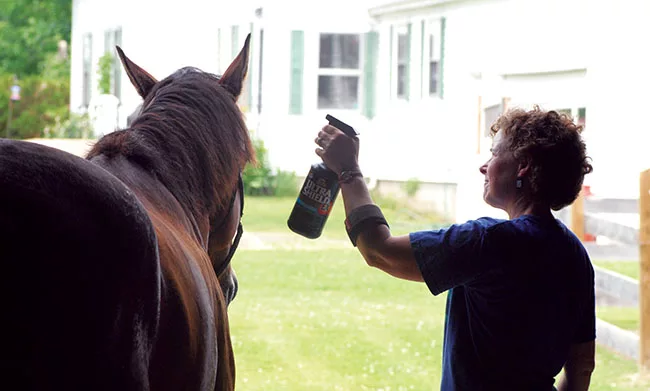American Farriers Journal
American Farriers Journal is the “hands-on” magazine for professional farriers, equine veterinarians and horse care product and service buyers.

Probably every farrier would like to work in a fly-and-mosquito-free environment. And while they may give their clients advice on preventive measures for limiting pest populations, the fact remains that every farrier — probably sooner rather than later — is going to have to deal with shoeing horses who are being targeted by insects.
Flytraps and insecticides intended for adult filth flies that perch on solid objects can be beneficial. If sanitation around the farm or stable is good, however, these flies won’t be reproducing. Even if they lay eggs, few will survive because conditions are not ideal. If flies are coming in from neighboring areas and bothering the horses, then the most effective tactic is to apply repellent.
Many farriers and owners use insecticide/repellents on horses, or use fly boots or leggings to keep horses from being bitten by stable flies, which tend to bite the legs and underside of the horse.
“If you have indoor stabling, you can keep horses inside, making sure you keep the flies outdoors, and eliminate any possible breeding sites within the barn. Then the horses can be comfortable indoors, away from the flies,” says Roger Moon, professor of entomology, at the University of Minnesota in St. Paul.
“I am not an advocate of automatic barn…